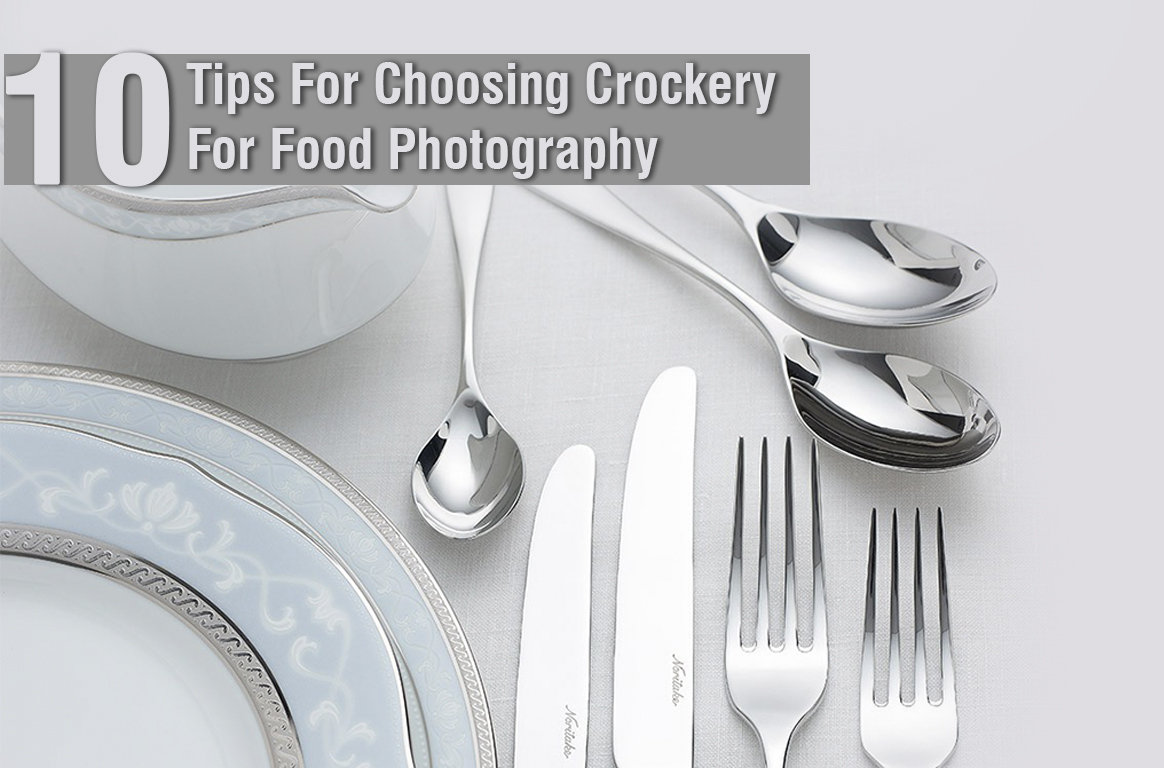
10 Tips For Choosing Crockery For Food Photography
When considering Food Photography, you need to remember that some crockery look good in front of the camera, some don’t look so good and some simply make your food POP! And over time, you will realise that you keep gravitating towards a few of the plates in your collection over the rest, and here we’ve captured a few ideas and general guidelines to help simply choosing fine crockery for food photography.
- Before we start, here are a few tips to keep in mind when you’re out hunting for those perfect pieces of tableware for food photography.
- The first thing you need to keep in mind is that, the size of your plates matter. Always buy the smaller sized plates to show off dishes, and the regular dinner plates to serve as platters.
- You always, always need to keep in mind the “negative” space on your plate. Salad plates for example are great as they seem big enough, they draw the focus onto your food and at the same time, give you enough space on the plate itself that you’re not fighting against it to show off the food. (More on patterned/textured plates later)
- Simplicity is the key. Your food needs to do the talking, and as such you should always stick to neutral or minimalist (our speciality!) plates. Of course, not all plates are equal and there is a nuance to this, but you’ll get it with experimentation and experience.
- You may use a dinner plate as a ‘platter’, for showcasing multiple dishes created for larger groups/gatherings, and the salad plates for single servings. While uniformity has its place, a few delicately engraved/filigree’d plates, for something like ‘high-tea’ for example, or some earthenware/stoneware plates for a more rustic look are simply unbeatable.
- Naturally, a full table spread, replete with matching cutlery and glassware, with everything plated to perfection, is an absolute delight.
- The only other thing to keep in mind when starting out, is to try to go for white or off-white. With these, adjusting your white balance is a breeze and it will save you a lot of frustration while editing. With white places you can set your white balance so that the plates are true white and from there you can ensure that your food looks as true to life as possible
- Brighter, more colourful plates for food that is a little less colourful or darker plates for curries and the like with bright garnishes on top… just a few tips to make your food pop. Sometimes, you will wind up with food that just isn’t the star, it’s simply unappetising or unattractive (Hey! It happens.). If this does happen, compensate with some dishes that are so beautiful that they make the entire shot look like fine art.
- White bowls are a no-brainer for food photographers. A bowl without a base, with smooth walls gives you a white styling palette with nothing to distract from the food. Do be mindful of the lip though. The food needs to be plated so that it fits within the ridge, but isn’t blocked by the lip. Choose bowls that have either vertical lips of ones that turn outwards slightly. Bowls with wide outward lips are harder to photograph, because there is much more “bowl” that you need to fit into the frame and less food. (similar to how larger plates have more ‘negative’ space to deal with.)
- One of the major things you’ll need aside from plates of all kinds, is glassware. Clear, thin-walled, delicate glasses look much better in photographs as you don’t get discolouration or distortion of your food/drink.
